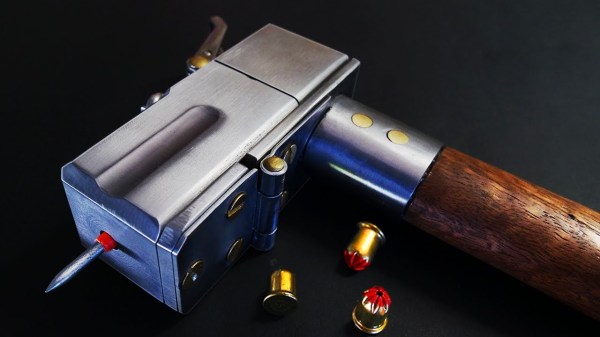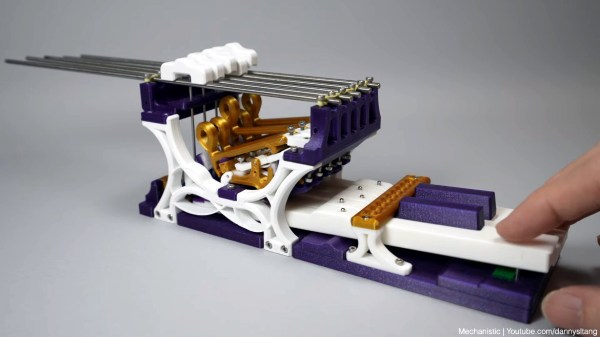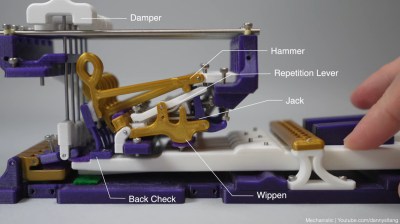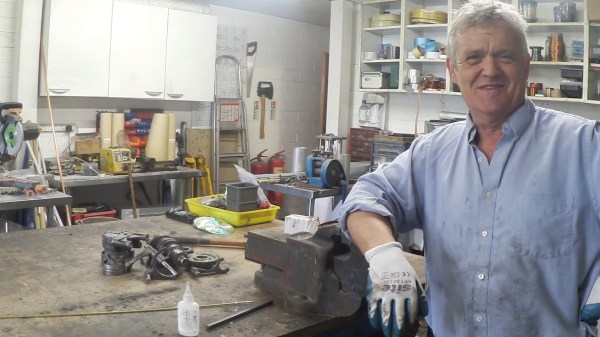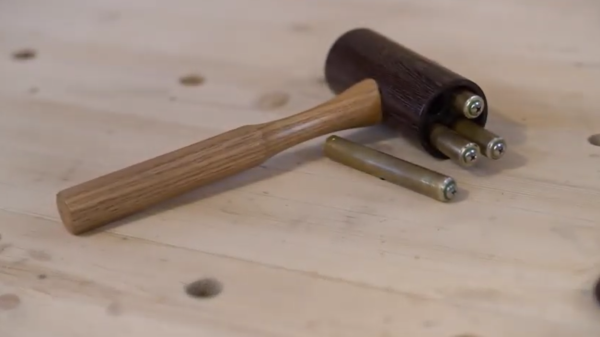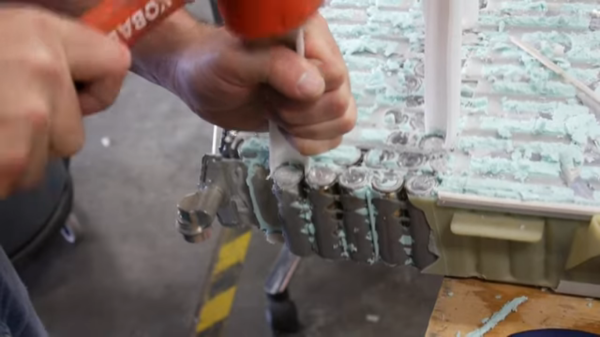Mjolnir, also known as Thor’s hammer, is a discerning thing, at least if you believe the modern Marvel canon. [alemanjir] decided to build a semi-functional replica that makes judgement calls of its own, though they’re perhaps a little less thought-out than the storied hammer of legend.
The build consists of a 3D-printed hammer prop, inside of which is a Raspberry Pi Pico microcontroller running the show. It’s hooked up to a MPR121 touch sensor that detects when someone grips the handle of the hammer. At this point, the Pico makes a pseudorandom “worthiness check” as to whether the holder is righteous enough to wield the hammer. If they are pure of heart, it unlocks a magnet which frees the hammer from whatever metallic surface it might be stuck to. [alemanjir] also included a little additional functionality, with the hammer playing various sounds when swung thanks to a speaker and a ADXL345 accelerometer secreted inside.
One wonders whether the electromagnet inside is strong enough to hold out against an unworthy person lifting it from the ground. While it’s perhaps not as powerful or as decisive as the mythical object, it’s nonetheless a fun learning project that likely taught [alemanja] some useful basics of embedded development.
We’ve featured some terrifying takes of the Mjolnir prop before, too, like this shockingly high voltage version. Video after the break.
Continue reading “Smart Mjolnir Makes Questionable Judgement Call On Your Worthiness”


